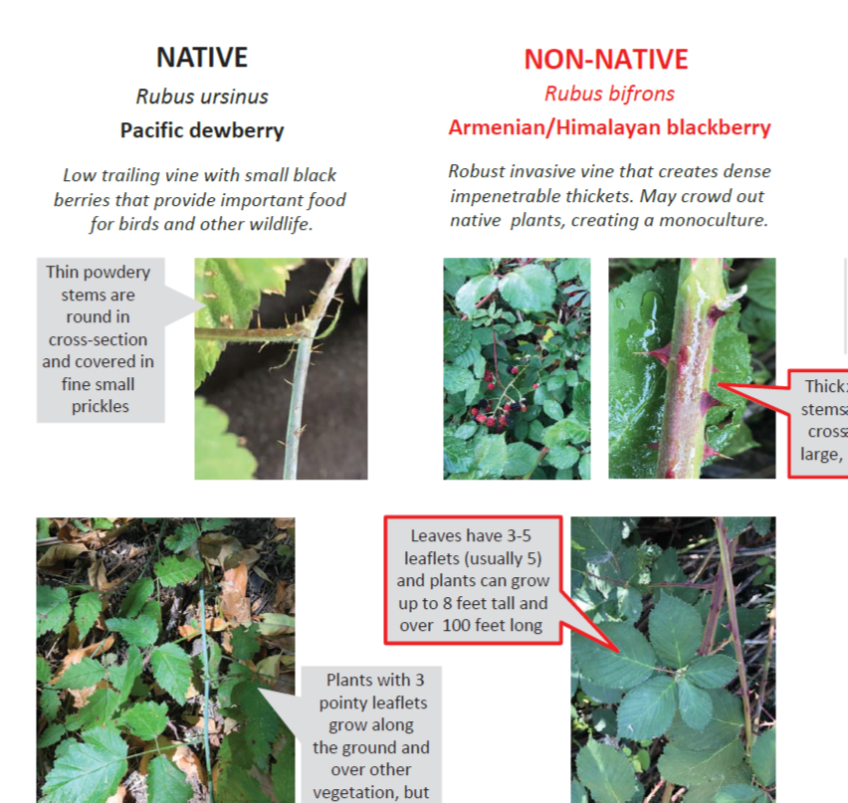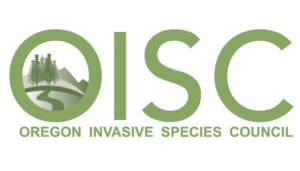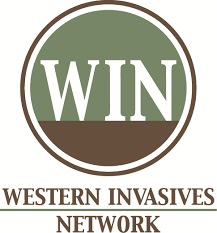Invasive plants are a destructive force, causing harm to the environment, economy, and sometimes even to human health. Marion SWCD provides resources to help you learn to identify and manage some of the species of concern in our region.

Invasive Plant Database
Search for invasive plants in our database, filter by habitat type, growth form, and other characteristics.
Mid-Willamette CWMA
The Mid-Willamette Cooperative Weed Management Area (CWMA) is a partnership dedicated to combating invasive weeds across the region. The CWMA promotes invasive plant education, community outreach, weed inventory, data management, and weed prevention and control activities.


Plant Identification Guides
Having trouble telling different but similar plants apart? Our Invasive Plant Program is rolling out a series of Plant ID Guides starting with a handy Bramble ID Guide.
Invasive Plant Education
Invite Marion SWCD to talk to your group about invasive plants or view recorded presentations on our YouTube Channel.


How to Report Invasives
Have you seen something suspicious in your backyard or neighborhood? Are you having trouble identifying something you’ve found? Report potential invasive species you’ve found to the Online Hotline.
Recommended Invasive Species Resources

ODA Noxious Weed Control Program
The Noxious Weed Control Program serves as a leader in protecting valued natural and agricultural resources from the introduction and spread of noxious weeds. Noxious Weed Control Program staff implement early detection and rapid response projects for new invaders, provide assistance to those implementing integrated weed management projects across the state, deliver education outreach programs, and much more.

Solve Pest Problems
Learn research-based, safe, and effective tactics for common garden and property pests and weeds. We provide non-chemical methods alongside the most effective and least toxic chemical options available, to reduce risk to people and the environment.

Oregon Invasive Species Council
Oregon Invasive Species Council’s mission is to protect Oregon’s natural resources and economy by planning and leading a coordinated and comprehensive campaign to prevent the introduction of invasive species and eradicate, contain, or manage existing invasive species in Oregon.

Oregon iMap Invasives
iMapInvasives is a comprehensive tool for online invasive species data management, with many aspects to appeal to natural resource managers, volunteers, and the public.

Seek by iNaturalist
Use the power of image recognition technology to identify the plants and animals all around you.

Western Invasives Network
The Western Invasives Network (WIN) is a regional partnership network of individuals, agencies, and organizations concerned with rural and urban invasive weed issues in northwestern Oregon and southwestern Washington. WIN encourages cooperative weed management through field trips,
grant research and writing, workshops and trainings, partnership recruitment, education and outreach, inventory and control projects, and meetings.
Contact Us
Our staff offer education and technical assistance to help you manage invasive plants.

